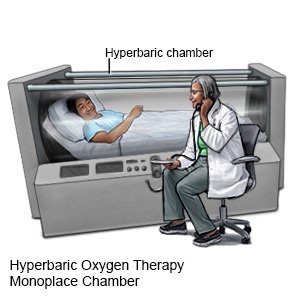Compartment Syndrome
Medically reviewed by Drugs.com. Last updated on Apr 6, 2025.
What is compartment syndrome?
Compartment syndrome happens when swelling or bleeding increases pressure in and between muscles. This stops blood from flowing to the area and causes muscle and nerve damage. Compartment syndrome usually happens in an arm or leg. Symptoms start suddenly and get worse quickly. Without immediate treatment, damage may become severe and permanent.
What increases my risk for compartment syndrome?
- Direct pressure, such as from a bandage or cast that is too tight
- An injury that causes swelling or bleeding, such as broken bones, burns, a crush injury, or allergic reactions
- Certain medicines that increase your risk for bleeding or pressure buildup
- Medicines or IV drugs that are injected into the veins
- Surgery that caused your leg to be placed above the level of your heart for a long period of time
What are the signs and symptoms of compartment syndrome?
- Severe pain that seems worse than you would expect for the injury, or that does not get better with pain medicine
- Pain that increases when you rest the area or stretch or bend the area
- Swelling, tightness, or hardness of the skin in the area that was injured
- Pale or shiny skin near your injury
- Weak muscles in the area, or trouble moving your injured arm or leg
- Numbness, tingling, or burning in the area
How is compartment syndrome diagnosed and treated?
Your healthcare provider will examine the area where you are having pain. The provider may also measure the pressure in this area. You may need to have a cast or bandage loosened or removed. This will help decrease pressure in your muscles. You may also need any of the following:
- Prescription pain medicine may be given. Ask your healthcare provider how to take this medicine safely. Some prescription pain medicines contain acetaminophen. Do not take other medicines that contain acetaminophen without talking to your healthcare provider. Too much acetaminophen may cause liver damage. Prescription pain medicine may cause constipation. Ask your healthcare provider how to prevent or treat constipation.
- Hyperbaric oxygen therapy is used to get more oxygen into your body. The oxygen is given under pressure to help it get into your tissues and blood. You may need to have this therapy more than 1 time.

- Surgery may be needed to decrease pain, pressure, and swelling.
What can I do to prevent compartment syndrome?
- Elevate your arm or leg after an injury. Raise your arm or leg at the level of your heart as long as directed. This will help decrease swelling and pain. Do not raise your arm or leg higher than your heart. Prop it on pillows or blankets to keep it elevated.
- Check for proper fit. Make sure a brace or bandage you get after an injury is not too tight. You should be able to fit 2 fingers between your skin and the brace or bandage.
When should I seek immediate care?
- Your pain or swelling does not go away or gets worse, even after you take medicine.
- Your injured arm or leg turns blue or white or feels cold and numb.
- Blood soaks through your bandage or cast.
- Your wound is draining pus or smells bad.
When should I call my doctor?
- You have a fever.
- You have more swelling than you did before a cast, brace, or bandage was put on.
- Your skin is itchy and swollen, or you have a rash.
- You have questions or concerns about your condition or care.
Care Agreement
You have the right to help plan your care. Learn about your health condition and how it may be treated. Discuss treatment options with your healthcare providers to decide what care you want to receive. You always have the right to refuse treatment. The above information is an educational aid only. It is not intended as medical advice for individual conditions or treatments. Talk to your doctor, nurse or pharmacist before following any medical regimen to see if it is safe and effective for you.© Copyright Merative 2025 Information is for End User's use only and may not be sold, redistributed or otherwise used for commercial purposes.
Further information
Always consult your healthcare provider to ensure the information displayed on this page applies to your personal circumstances.
